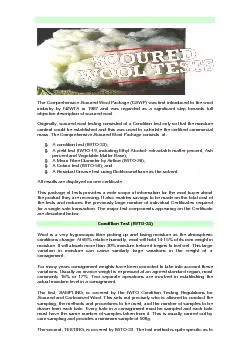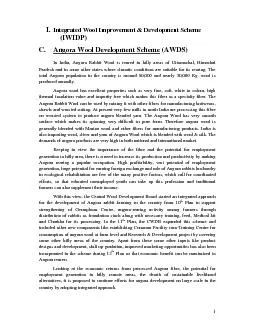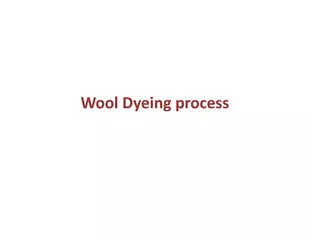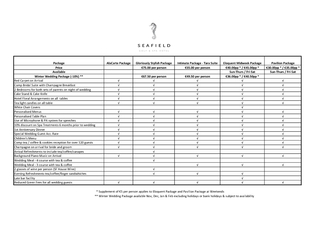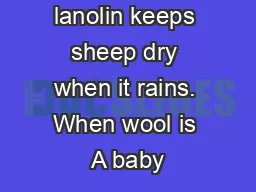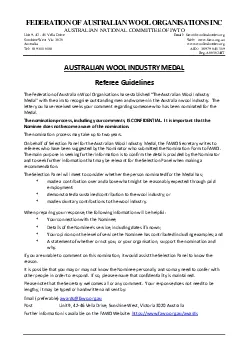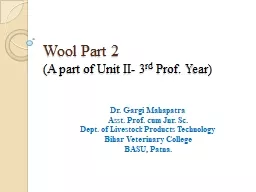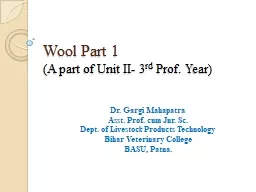PDF-The Comprehensive Scoured Wool Package (CSWP) was first introduced to
Author : faustina-dinatale | Published Date : 2015-10-18
Condition Test IWTO33 Wool is a very hygroscopic fibre picking up and losing moisture as the atmospheric conditions change At 65 relative humidity wool will hold
Presentation Embed Code
Download Presentation
Download Presentation The PPT/PDF document "The Comprehensive Scoured Wool Package (..." is the property of its rightful owner. Permission is granted to download and print the materials on this website for personal, non-commercial use only, and to display it on your personal computer provided you do not modify the materials and that you retain all copyright notices contained in the materials. By downloading content from our website, you accept the terms of this agreement.
The Comprehensive Scoured Wool Package (CSWP) was first introduced to: Transcript
Download Rules Of Document
"The Comprehensive Scoured Wool Package (CSWP) was first introduced to"The content belongs to its owner. You may download and print it for personal use, without modification, and keep all copyright notices. By downloading, you agree to these terms.
Related Documents

